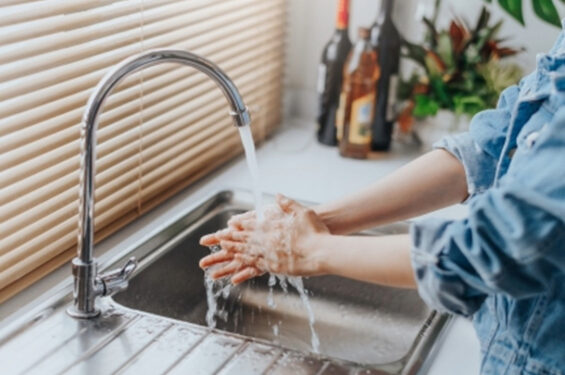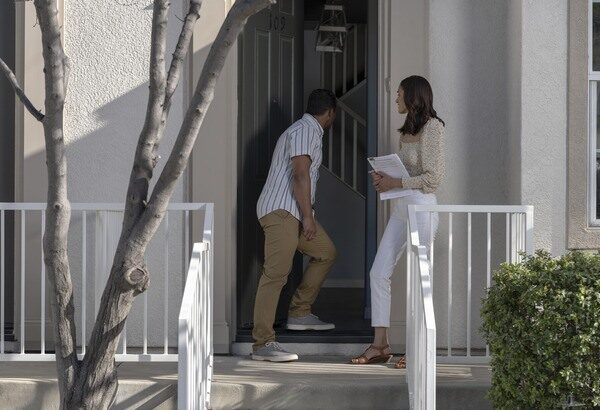
As temperatures decrease in the winter, the water temperature in your pipes can plummet as well. This can lead to potential blockages or even the risk of the pipes bursting, which can interrupt your day-to-day life and lead to costly repairs. Luckily, there are proactive measures you can take to help thaw your pipes and decrease the risk of future damage.
Why do pipes freeze?
During the drop in temperature, water may freeze inside plastic pipes, which causes it to expand and pressurize. Not only can frozen pipes prevent water from flowing properly, but as the water within expands as it freezes, the pipes can potentially burst and cause flooding to your home. With this in mind, it’s crucial that homeowners know what to do if pipes freeze.
At what temperature do pipes freeze?
Pipes exposed to prolonged temperatures of 20 degrees Fahrenheit or lower are at risk of freezing, especially if they are not insulated. Other factors can play significant roles in determining their susceptibility to freezing, such as the pipe’s location, the level of insulation and even the material of the pipe. [1]
How to help prevent pipes from freezing
There are a few steps you can take to prevent pipes from freezing:
- Insulate pipes in attics and crawl spaces.
- Seal any cracks in the pipes.
- Disconnect outdoor hoses and faucets.
- Allow a slow drip of water in faucets.
- Leave the cabinet doors under your sink open.
- Keep your home at a minimum of 55 degrees Fahrenheit.
- Ask a trusted friend or neighbor to check on your home for leaks while you’re traveling. [2]
What to do if a pipe bursts
If a pipe bursts in your home, you’ll need to act fast to mitigate water damage. Shut off your water as quickly as possible. You may also want to shut off power in the affected area of your home and drain the faucets to help prevent freezing.
After you’ve taken these precautionary steps, it’s time to call a professional and start mopping up any mess that’s been caused. Try to remove as much of the water and lingering moisture as you can to avoid mold and mildew buildup. Depending on the severity of your case, you may also need to bring in other professionals to address damage to your walls, carpet, flooring or ceiling. [3]
Warning signs of frozen pipes
If you’re worried your pipes might be frozen, look for these signs:
- Little to no running water from your faucets
- Cracks or bulges in the pipes
- Heavy condensation or frost on the outside of your pipes
- Whistling, gurgling or banging sounds coming from your pipes
- Puddles, water spots or water rings on walls or ceilings
- A bad smell coming from drains or faucets [4]
How to unfreeze pipes
How can you tell if your pipes are frozen? If you turn on the bathroom or kitchen faucet and see only a few drops or a trickle of water, this could indicate that water inside the pipes has frozen, preventing a free flow. Don’t panic. You may be more equipped to deal with the situation than you think. Here’s a quick lesson on how to thaw a frozen pipe.
Step 1. Turn on the faucet
Keep it running. Allowing the faucet to drip even slightly can help prevent a pipe from bursting. When freezing takes place, extreme pressure builds between the faucet and the ice blockage. An open faucet can relieve this pressure buildup, and help prevent a burst from occurring.
Step 2. Apply heat to the frozen area
Slowly apply heat using a hair dryer. There are several ways to do this. You can wrap the pipes in thermostatically controlled heat tape, or you can use an external heat source such as a hair dryer or space heater. Do not use a propane torch as this can damage the pipe and create a fire risk.
If you decide to use a hair dryer, begin directing air close to the faucet end of the pipe and gradually move toward the coldest section. Be careful not to overheat the hair dryer or blow a fuse. Remember, the faucet should be left on while heat is being applied.
Step 3. Continue to apply heat
Don’t stop heating until the full water pressure is restored. Even then, it’s a good idea to leave the faucet open for a few minutes after the pipe is thawed. This will give the ice time to completely clear from the line.
Step 4. Check all faucets and prevent pipes from freezing in the future
Check each faucet in your home for any other frozen pipes. One frozen pipe may mean that others have been affected as well. If the problem persists, contact a plumber. You can prevent pipes from freezing again by taking a few simple steps:
- Before traveling, keep the temperature in your home well above freezing and turn off all the water to your house.
- Be sure to keep all water pipes, especially those close to outside walls, insulated.
- Keep cabinet doors with plumbing open to allow air to circulate.
- Let your faucets drip cold water — it’s harder for a pipe to freeze even if there is a trickle of water flowing through. In order to not waste water, you can collect the drops and reuse them, possibly for cleaning or watering plants.
How long does it take for pipes to unfreeze?
Using any of the handful of methods to thaw frozen pipes will typically take about 30 to 45 minutes. This can vary greatly depending on the weather, how long the pipe has been frozen and where the pipe is located. Any of these factors can cause the thawing process to take longer. [5]
And remember, a frozen pipe isn’t the only issue that comes with cold weather. Find out other ways to protect your home during the winter.
Make sure your home is protected
Ensure that your home is protected from the unexpected. Get a free homeowners insurance quote or learn more about Nationwide’s smart home insurance program. This program is an innovative way to keep your home safe from water damage, break-ins, fires and more.
Insure your home with Nationwide
In the event of a disaster or accident, most people can’t afford to rebuild their home or replace everything in it. That’s where a home insurance policy comes in handy.

Sources:
[1] “At What Temperature Do Pipes Freeze and How Do You Protect Them?” angi.com/articles/what-temperature-pipes-freeze.htm (Accessed August 2024).
[2] “How to Prevent Pipes From Freezing,” homedepot.com/c/ah/how-to-prevent-pipes-from-freezing (Accessed August 2024).
[3] “10 Things to Do When a Pipe Bursts in Your Home,” angi.com/articles/help-my-pipe-burst.htm (Accessed August 2024).
[4] “Signs of Frozen Pipes: How to Spot Them Quickly,” angi.com/articles/signs-frozen-pipes.htm (Accessed August 2024).
[5] “How to Thaw Frozen Pipes,” bobvila.com/articles/how-to-thaw-frozen-pipes (Accessed August 2024).
Disclaimer:
The information included is designed for informational purposes only. It is not legal, tax, financial or any other sort of advice, nor is it a substitute for such advice. The information may not apply to your specific situation. We have tried to make sure the information is accurate, but it could be outdated or even inaccurate in parts. It is the reader’s responsibility to comply with any applicable local, state or federal regulations. Nationwide Mutual Insurance Company, its affiliates and their employees make no warranties about the information nor guarantee of results, and they assume no liability in connection with the information provided. Nationwide N and Eagle and Nationwide is on your side are service marks of Nationwide Mutual Insurance Company. © 2025 Nationwide



